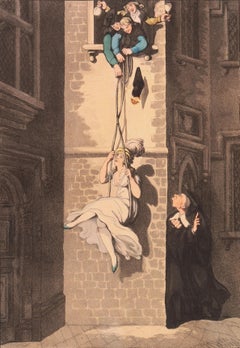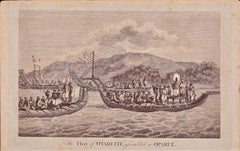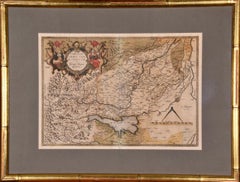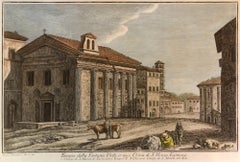Engraving Landscape Prints
Mid-18th Century Rococo Engraving Landscape Prints
Engraving
Early 18th Century Naturalistic Engraving Landscape Prints
Engraving
18th Century Engraving Landscape Prints
Paper, Engraving, Lithograph
1780s Engraving Landscape Prints
Engraving
16th Century Old Masters Engraving Landscape Prints
Engraving
Late 18th Century Old Masters Engraving Landscape Prints
Watercolor, Laid Paper, Engraving, Etching
1850s Engraving Landscape Prints
Mezzotint
1850s Engraving Landscape Prints
Mezzotint
18th Century Naturalistic Engraving Landscape Prints
Engraving
Late 19th Century French School Engraving Landscape Prints
Handmade Paper, Engraving, Photogravure
Early 19th Century English School Engraving Landscape Prints
Engraving, Watercolor, Handmade Paper
Mid-18th Century Naturalistic Engraving Landscape Prints
Engraving, Mezzotint
1930s American Modern Engraving Landscape Prints
Drypoint
1970s Engraving Landscape Prints
Mulberry Paper, Engraving
18th Century Old Masters Engraving Landscape Prints
Handmade Paper, Laid Paper, Engraving, Etching
1930s Modern Engraving Landscape Prints
Drypoint, Etching
1820s Realist Engraving Landscape Prints
Paper, Engraving
1970s Baroque Engraving Landscape Prints
Engraving
Late 18th Century Engraving Landscape Prints
Engraving
Early 19th Century Victorian Engraving Landscape Prints
Engraving, Etching, Aquatint
Late 18th Century Naturalistic Engraving Landscape Prints
Engraving
Early 2000s Modern Engraving Landscape Prints
Mezzotint
Mid-20th Century Realist Engraving Landscape Prints
Engraving
1990s American Modern Engraving Landscape Prints
Mezzotint
1970s Surrealist Engraving Landscape Prints
Engraving
1950s Modern Engraving Landscape Prints
Drypoint, Etching
Mid-19th Century English School Engraving Landscape Prints
Handmade Paper, Lithograph, Engraving
17th Century Old Masters Engraving Landscape Prints
Engraving
Mid-18th Century French School Engraving Landscape Prints
Handmade Paper, Watercolor, Engraving
1840s Modern Engraving Landscape Prints
Engraving
18th Century Naturalistic Engraving Landscape Prints
Engraving
Early 17th Century Naturalistic Engraving Landscape Prints
Engraving
Mid-19th Century Victorian Engraving Landscape Prints
Engraving
Late 19th Century Naturalistic Engraving Landscape Prints
Engraving
Mid-19th Century Victorian Engraving Landscape Prints
Mezzotint
2010s American Modern Engraving Landscape Prints
Engraving, Mezzotint
Mid-19th Century Victorian Engraving Landscape Prints
Mezzotint
Early 20th Century French School Engraving Landscape Prints
Drypoint, Etching, Engraving
1940s Modern Engraving Landscape Prints
Etching, Engraving, Drypoint
1780s Engraving Landscape Prints
Engraving
1950s Modern Engraving Landscape Prints
Drypoint, Etching
1950s Modern Engraving Landscape Prints
Engraving
Early 20th Century Realist Engraving Landscape Prints
Handmade Paper, Drypoint, Etching
Early 18th Century Old Masters Engraving Landscape Prints
Engraving
Late 20th Century American Modern Engraving Landscape Prints
Mezzotint
Early 2000s Modern Engraving Landscape Prints
Mezzotint
Mid-19th Century French School Engraving Landscape Prints
Handmade Paper, Engraving, Etching
Mid-19th Century French School Engraving Landscape Prints
Laid Paper, Etching, Engraving
Early 19th Century English School Engraving Landscape Prints
Handmade Paper, Engraving
Early 20th Century English School Engraving Landscape Prints
Laid Paper, Etching, Drypoint
1920s Art Deco Engraving Landscape Prints
Drypoint, Etching
1780s Engraving Landscape Prints
Engraving
Mid-20th Century Modern Engraving Landscape Prints
Engraving
1830s Engraving Landscape Prints
Engraving
17th Century Old Masters Engraving Landscape Prints
Engraving
Early 19th Century Victorian Engraving Landscape Prints
Engraving, Etching, Aquatint
1930s American Modern Engraving Landscape Prints
Drypoint
1870s Realist Engraving Landscape Prints
Engraving
Early 17th Century Naturalistic Engraving Landscape Prints
Engraving
17th Century English School Engraving Landscape Prints
Handmade Paper, Engraving





